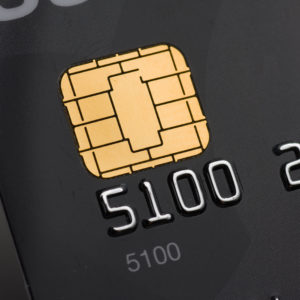All across America, consumers are in an uproar over chip-enabled credit cards. Folks don’t like the change, which came about abruptly with no real explanation and has subsequently led to uncertainty at the checkout counter. Americans are downright annoyed, and they want to know when the business community and credit card companies will finally get on the same page. Unfortunately, storefronts and local retailers take the brunt of public ire, even when credit card companies are responsible for the confusion.
It’s a relatable dilemma. You go to the checkout counter at a store expecting to swipe your card; but then the cashier tells you to insert it instead. At the next store, you go to insert your card, and the cashier tells you to swipe it. Confusion and frustration ensue.
One of the best narratives of consumers’ opinions on chip technology comes from a recent New York Times article. Using popular social media clips, the piece highlights consumers’ angst with what seems like a constantly changing payment process.
The article goes on to argue that it’s time to fully move forward with chip technology. “If all businesses upgraded their terminals — which they are not required to do by law — at least the confusion over whether to swipe or insert would be settled,” the article asserts. My thoughts exactly, but the credit card companies haven’t made those upgrades easy to accomplish.
I have seen firsthand how the standstill in transitioning to chip-enabled cards is affecting privately owned family businesses. For many of our members, who earnestly seek to improve security for their customers, it’s been an unnecessarily difficult transition.
After installing the required equipment and software to accept chip cards, the real headaches loom. The new payment terminals have to be certified and tested. Unfortunately, the credit card companies did not adequately prepare for the expected swell of certifications that would be needed, which caused staggering delays and waiting queues, with some businesses left sitting by idly, recording payments by hand, and in the most dire of circumstances, unable to process transactions at all.
All of this occurred as businesses worked to operate normally and struggled to help their customers navigate issues with their new chip cards. And when customers become frustrated, the business proprietor or employees who interact with them face-to-face often endure most of the blame; not the credit card companies.
To make matters worse, family businesses have undergone these challenges for new chip cards that aren’t as secure as originally advertised, in part because they lack a common security feature chip cards have long had in other countries: PINs.
It was certainly alarming to many when a pair of hackers demonstrated that they could hijack chip card payment mechanisms at a recent security conference last month. And as cybersecurity threats evolve, chip cards may not be as impenetrable as we had hoped.
But these new chip cards have other flaws too. They still rely on signatures, which can be easily forged, meaning thieves can still use them to commit common forms of fraud. Chip-and-PIN cards, on the other hand, require a unique code to be entered at each transaction, providing an added layer of protection that would-be thieves struggle to overcome. More importantly, the PIN requirement is especially promising if it can be adapted to better safeguard online transactions, which chip cards can’t protect.
As the credit card companies slow down and complicate the transition to new chip cards – cards that aren’t even as secure as they should be – I encourage consumers to remain patient. Our members will continue to do their part to serve customers in their communities with the latest payment systems, even if the credit card companies have no interest in doing their part better.

